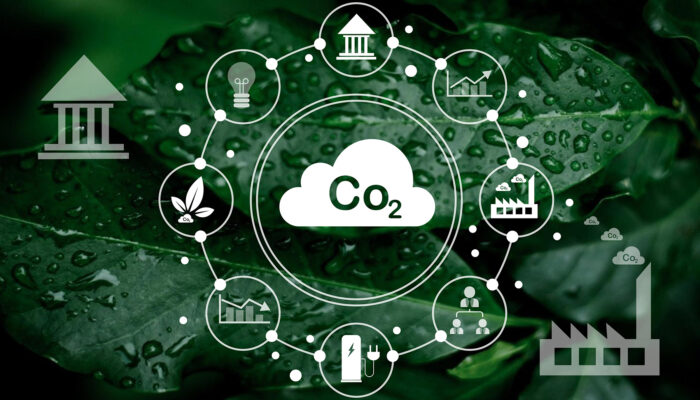We are a team of seasoned financial experts possessing a deep understanding of global markets, offering you unparalleled insights that transcend geographical constraints.
We recognise that each entrepreneur and investor brings a unique vision to the table. Whether you’re looking to maximise value through an M&A transaction or secure the ideal growth financing to propel your business forward, our financial advisory services are tailored to your specific goals and market position. Our commitment is to transform your aspirations into tangible results, providing the strategic insight and support you need at every step of your journey.
BACKED BY DAI, A $1BN GLOBAL DEVELOPMENT COMPANY
Being part of the DAI global network, we have the distinct advantage of having access to their global platform, strong local partnerships, and in-depth market knowledge to act as a conduit for investment capital in new and emerging markets.
WHO ARE DAI?
OUR PRO BONO DAI ACADEMY
The DAI Magister Academy represents a natural extension of our existing advisory efforts within the ecosystem.
In response to valuable input from start-ups, we have identified an unmet need to offer expertise and counsel to companies that may not yet qualify for our formal support but are on the verge of realising their potential for success.
As an integral part of our sustained commitment to the African/MENA markets and the climate tech landscape, we are delighted to provide comprehensive assistance, completely free of charge, to a select group of high-growth organisations. These are companies poised to secure significant funding within the next 18 months.
Our dedication to nurturing the growth and success of these promising ventures aligns with our broader mission of fostering innovation and entrepreneurship within the region.

According to research, the global climate risk assessment market is projected to reach $31.2 billion by 2030, growing at a compound annual growth rate (CAGR) of 17.5% between 2024 to 2030. This growth is fuelled by the rising adoption of AI and machine learning technologies in climate risk modelling and assessment.

The second quarter of 2024 marked a turning point, with PE’s strongest deal-making period in two years. PE firms closed 122 acquisitions valued at an impressive $160 billion. While this still pales in comparison to the high-water mark of Q3-2021—when 232 deals worth $300 billion were completed—it represents…

According to Future Business Insights report, the global green technology and sustainability market for steel production is projected to reach over $89 billion by 2032, growing at a compound annual growth rate (CAGR) of 20.9% from 2024 to 2032. This remarkable growth is driven by increasing environmental regulations, consumer demand for sustainable products, and the steel industry’s…

The magnitude of the global food waste crisis is nothing short of alarming. Approximately one-third of all food produced worldwide—a staggering 1.3 billion tonnes—ends up in bins and landfills annually. This equates to roughly £1 trillion worth of food lost or wasted every year. In the UK alone, the scale is equally sobering: households and businesses squander around 9.5 million tonnes of food annually, with a value exceeding £14 billion.

Currently, the annual utilisation of CO2 stands at approximately 230 million tonnes, with the majority being channelled into urea production for the fertiliser industry and enhanced oil recovery. However, this figure falls significantly short of the volume we must capture by 2050 to achieve net zero emissions. To address this shortfall, a substantial increase in utilisation methods and sequestration is required.

Despite the increased adoption of renewable energy and growing maturity of several key decarbonisation pathways, CO2 emissions peaked in 2023 and are projected to continue rising for decades to come. Even governments of countries with firm climate commitments, such as the UK which pledged to achieve zero-carbon electricity by 2035, will continue to build new natural gas-fired power plants to ensure reliable power supply.

The urgency of the water crisis is likely to drive further investment and innovation in the coming years. With freshwater demand projected to surpass supply by 40% by 2030, there is a clear and growing need for innovative water solutions. This gap between supply and demand represents a substantial market opportunity for companies that can develop effective technologies to address water scarcity, improve water quality, or enhance water use efficiency…

As the demand for AI surges, so does the energy consumption of data centres. It’s predicted that by 2026, data centre electricity consumption could reach 1,000 terawatt-hours, equivalent to Japan’s total annual usage. However, AI itself may hold some of the keys to addressing this challenge. Our blog delves into how AI-driven solutions are transforming data centre operations, from optimising power usage to enabling smart grid integration…

NPUs are emerging as the solution of choice in an AI semiconductor market bifurcating into training and inference applications. These specialised chips offer significant advantages in terms of size, cost and energy efficiency for AI processing tasks. With projections indicating the edge AI inference device market will reach c$50bn by 2026, this presents a considerable opportunity…

In our earlier posts we explored two key elements of successful exit preparation: the overarching idea of preparing to be “bought not sold” and the “essential actions” a company and board can undertake, well in advance of any planned exit, to maximise both price and certainty. A third vital dimension in any successful exit prep phase (what we term “Stage 1”) is cultivating serious buyer interest well in advance of an intensive exit process (“Stage 2”).

In this second post on exit planning, we explore some of the key actions that underpin successful preparation (what we call Stage 1) before an intensive, competitive M&A sale process (Stage 2). Based on our experience across 300 exits spanning decades, we firmly believe that thoughtful, sustained preparation over several months or even 1-2 years before a company is formally put up for sale increases both the price and certainty of an eventual deal.

From the highs of 2021-22, exits exceeding $100 million have fallen 50% to 2018-19 levels. While this is still considerably higher than the previous decade, to investors and founders this surely feels like a sharp decline. This reset, however, should come as no surprise. Everything reverts toward the mean, and with high interest rates and public companies going private due to low valuations amidst economic and macro uncertainty, achieving successful exits now requires thoughtful and sustained planning to maximise value…

The digital health landscape is evolving rapidly, with advancements in remote consultation, mental health support, at-home diagnostics, patient monitoring, and the integration of artificial intelligence (AI) and generative AI (GenAI). These technologies are not only improving access to healthcare services but also transforming the way care is delivered, making it more efficient, personalised, and patient-centric…

Remittances play a pivotal role in many African economies, significantly contributing to their Gross Domestic Product (GDP). In 2022, remittances accounted for an average of 7.6% of GDP in Western Africa, 6.8% in Eastern Africa, 4.4% in Northern Africa, 3.7% in Southern Africa, and 1.4% in Central Africa. The total value of remittances in Africa reached nearly $100 billion, with $20 billion being intra-Africa flows.